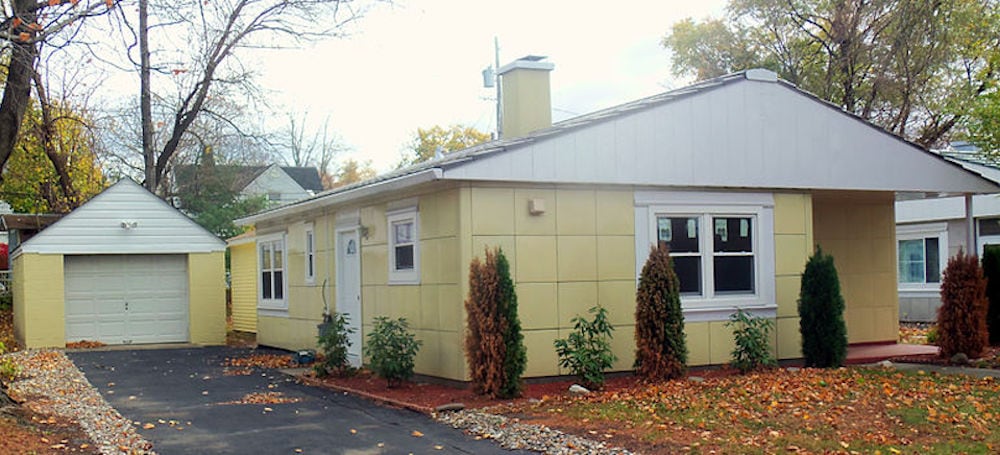
[Image above] Forget a glass house—Lustron once offered an all-ceramic abode to call home. Credit: Daniel Case; Wikimedia (CC BY-SA 3.0)
While porcelain enamel is still found in various products, places, and applications in modern homes, at one point in history it looked like houses of the future would be made entirely of this material.
[Wondering where you can find porcelain enamel in a modern home? Check out the December issue of the ACerS Bulletin for a feature article detailing the many interesting and valuable ways that ceramic and glass materials contribute to residential buildings.]
From 1948–1950, the Lustron Corporation used an assembly line in a former warplane manufacturing factory in Columbus, Ohio, to manufacture porcelain enamel houses as a quick and low-cost solution to the post-World War II housing crisis.
“The 1 million-square-foot factory (about the size of 22 football fields) contained about 8 miles of automated conveyors, 163 presses, 11 furnaces, and the largest porcelain enameling set-up in the world,” according to the Ohio History Connection website.
Lustron houses were constructed from steel framing clad with porcelain enameled steel panels on the exterior and interior walls and roof. Houses were shipped as kits of more than 3,000 parts, assembled on-site with the guidance of an instruction manual.
These modular construction kits contained an entire home—including windows, doors, gutters, toilets, sinks, baseboards, counters, and heating system—so that all inhabitants had to add were appliances and furnishings.
Although the factory ultimately ran into production issues, about 2,680 Lustron porcelain enamel homes were built across the country, of which 1,500 are estimated to survive today.
Lustron was the first to commercialize porcelain enamel houses, however, it was not the first to manufacture them. About 20 years prior, a partnership of the Ferro Enamel Corporation and American Rolling Mill Company (ARMCO) manufactured the world’s first porcelain enamel house and debuted it at the 1933 World’s Fair in Chicago.
The Armco-Ferro house—a “seemingly frameless” structure built from bolted corrugated panels clad with porcelain enameled steel panels—was one of several homes debuted at the fair under a “Century of Progress” theme, meant to inspire a hopeful vision of innovative futuristic homes to a society weary from the Great Depression.
Fully restored, the Armco-Ferro house still stands today and can be toured at Indiana Dunes National Park in Indiana.
Be sure to check out the many other ways that ceramic and glass materials contribute to the residential building market in the latest issue of the ACerS Bulletin!
Author
April Gocha
CTT Categories
- Construction
- Education


